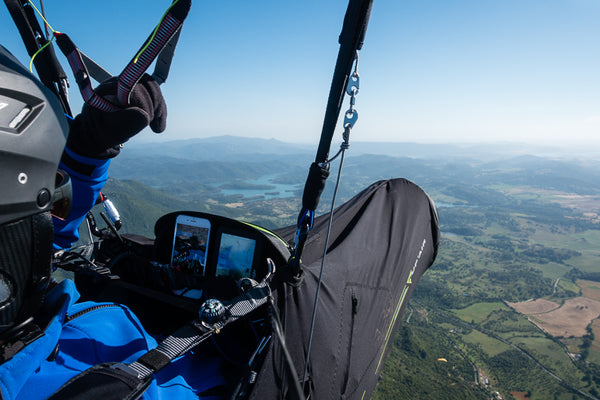- Continue Shopping
- Your Cart is Empty
Everest & Back in 14 days by Roxanne Vogel - An endurance Lab Project using Astroskin
Roxanne Vogel, Mountaineer and Nutrition & Performance Research Manager at Gu Energy Labs, became the first person to complete a lightning ascent of Mount Everest. On a normal climb, the journey would take nearly two months, but Vogel completed the round trip in just 14 days.
The Hexoskin team wants to congrats Roxanne for completing this amazing challenge and reaching the top of the world!
Astroskin: a non-invasive method to collect novel data above 7000 m continuously and in real-time to study the effects of altitude.
Roxanne turned the experience into a science project to study the effects of a rapid ascent on the human body. For this journey, the Astroskin Shirt presented itself as an important measurement tool to study the Montaineer vital signs during the ascent. «It was a non-invasive method to collect novel data above 7000 m continuously and in real-time so that I could not only monitor my physiology for safety reasons but also gather information about how the human body adapts to high altitude hypoxia in such a short amount of time. This is the first time the world will see continuous data of this nature for the variables Astroskin measures! I needed something I could put on, press start, and forget about that didn’t take up much space or weight to carry, and Astroskin was the perfect solution.
The Astroskin Shirt is comfortable to wear and the set up is very user-friendly. I put it on and basically forgot it was there, except when I had to change batteries. It made my life as a scientist on the mountain so much easier than if I were to attempt to collect similar variables at distinct data points, which would only provide a “snapshot” of the data, not a complete picture. Overall, it was a great experience using the Astroskin», said Roxanne Vogel, Mountaineer and Nutrition & Performance Research Manager at Gu Energy Labs.
A 14 days Mount Everest Lightning Ascent that Pushes the Limits of Mountaineering
Roxanne left Berkeley on May 10 for the 14 days Mount Everest Lightning Ascent and complete her sixth summit climb out of the world’s seven highest mountains. Vogel spent four months training with coaches and three months training for the changes in altitude.
Roxanne Vogel reached the summit on May 22 at 11:45 a.m and arrived back in the San Francisco at 11 p.m. Friday. Her next adventure is in Antarctica, where she will endeavor to complete her seven-summit goal by the end of the year.
«My friend and hero Lydia Bradey and I summited Mount Everest (8848 meters/29,029 ft), the first climbing members to reach it from the Tibet side this season, just as the rope-fixers finished putting up the final 500 vertical feet of lines. They hugged and high-fived us as they descended, leaving us alone with our two Sherpas, Mingma Tshering and Pasang Tendi, on the summit, an incredible and almost non-existent experience.
We climbed from Camp 2 at 7700 meters, departing late by Everest standards at 1:45 AM, to give the rope fixers time to finish their work. No one else climbed from the north side that day. We were so fortunate to have the mountain all to ourselves. Hard to believe, still processing.»
Source:
https://guenergy.com/roxy-on-everest/
Congrats to Roxanne Vogel for reaching the top of the world! #Astroskin @Hexoskin
— Pierre A Fournier (@pafournier) 23 mai 2019
About Hexoskin
Since 2006, Hexoskin’s mission is to develop sensors and health data infrastructure to generate clinical grade real-world evidence. The Astroskin demonstrates once again Hexoskin’s leadership in providing the industry leading sensors, software, and AI to push further our understanding of human physiology on earth and in space. To learn more on Astroskin Vital Signs Monitoring Platform download Astroskin Product Specifications document.
Contact our team to order Astroskin.
Red Bull flying with Hexoskin in the Karakorum
The Free Flight Physiology Project Team in Karakorum, Pakistan is using Hexoskin to monitor their vitals when they fly over the countryside. Dr Matt Wilkes and this team from the Centre for Altitude, Space and Extreme Environment Medicine from the Institute of Sport Exercise & Heath (London, UK) are getting their gear ready for the Red Bull paragliding team later this year, but also to conduct serious research on physiology in altitude. They also took amazing pictures and video of their experience!



Here's more information about their project:



